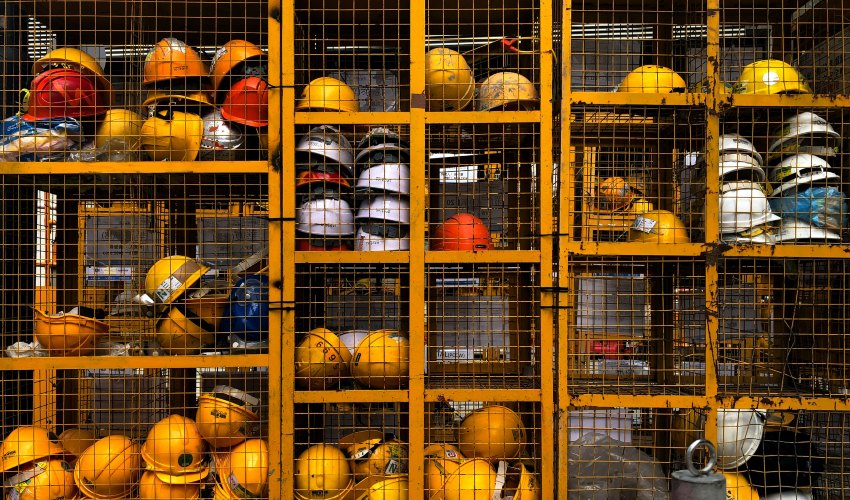Methods of Mitigation for HSE Prosecutions
199 cases were brought against businesses and individuals concerning health and safety at work in 2021. The conviction rate for all cases brought by the HSE was 95%. We believe it has never been more important that our clients stay on top of their practices, plants and systems of work – ensuring their workplace is safe to reduce the likelihood of a Health and Safety prosecution.
The rise of prison sentences for directors is quite alarming, as are the personal fines for being found liable for a breach of duty. Directors are often fined on a percentage of their weekly incomes. But on the day of the trial, a judge could quite easily double the normal penalties depending on the case. Therefore it is best employers do everything necessary to uphold health and safety and avoid prosecution.
First let’s look at what the health and safety at work act legislates, and then what employers can do to reduce the likelihood of a prosecution.
A document guiding employers on methods of mitigation against HSE prosecutions is available from Romero Insurance Brokers, which details the below information, and is freely available.
Methods of Mitigation – Download PDF
Health and Safety at Work Act (1974) - What does it legislate?
The Health and Safety at work act applies to all forms of business. It impacts employers to employee relations, employers to the hired self-employed or third parties, employers to the general public, employers upon themselves and their own environment, as well as employers and corporate bodies.
In Section 2, the Health and Safety at Work Act (HSWA) stipulates the duty employers have toward their employees. The summation of which is as follows:
“It shall be the duty of every employer to ensure, so far as is reasonably practical, the health safety and welfare of all his employees.”
However, the health and safety of employees is vast and varied, meaning that the duty upon employers is wide ranging. As an example some of the duties will include:
- Provision of systems to do enable safe work
- Maintenance of systems to enable safe work
- Instruction and training to ensure competence and safe working
- Maintaining health and safe working environment, including practical, social and economic factors
- Utilising a Health and Safety policy which is continually reviewed and updated
In Section 3, the HSWA stipulates employers must reduce and monitor risks to the health and safety of the general public. It plays heavily into the cause for Public Liability claims.
In Section 7, the HSWA obliges the employer to take reasonable care of themselves and their own working environment. Omissions or negligence by the employer can be used to prove direct responsibility over an injury to a member of staff.
In Section 37, the HSWA also lists that governing bodies, who wish to prosecute employers for a breach of duty, can not only take action against their business, but also the individual personally.
See our case study for a true example of what happens when a business and it’s Director are found guilt of negilence by the HSE – Case Study: Falsely Reporting a Fatality
What counts as a health and safety breach of duty?
Various pieces of legislation have noted where employers can be found subject to a breach of duty. This legislation includes, but is not limited to:
- Personal Protective Equipment at Work Regulations
- Manual Handling Operations Regulations
- Provision and Use of Work Equipment Regulations
- Lifting Operations and Lifting Equipment Regulations
- Management of Health and Safety at Work Regulations
- Control of Substances Hazardous to Health Regulations
- Work at Height Regulations
Minor incidents are not on the radar of the HSE, however a serious injury or fatality may result in an investigation and potential prosecution. Accidents do happen, and no employer whether they’ve had incidents or not is immune to them. We strongly believe businesses require a competent insurance broker and insurer to determine where improvements can be made. This will mean it is more likely that insurers find you have taken all reasonable precautions, and can therefore successfully defend the claim.
What can Employers do to reduce the likelihood of a prosecution?
1. – The first and most important point employers can do to avoid prosecution is to not have accidents in the first place. However accidents do and will happen, no business is immune; yet it’s still important to have all the health and safety policies and procedures in place to show a business has taken all reasonable precautions.
2. – It is imperative organisations have what is known as a ‘competent person’ responsible for all things health and safety. They need to know and understand what is required of the business following the above legislative duties, and how to carry out and document necessary changes. Alternatively businesses may choose to outsource this to a consultant or adviser, such as the health and safety consultancy firm, Sentient. The competent person should have the skills, knowledge, and experience to be able to recognise hazards and put sensible controls in place to protect works and others from harm. Outsourcing to Sentient guarantees businesses have that competent consultant on hand to ensure all health and safety legislated requirements are met, or are met to the best of the business’s ability.
3. – Another method to reduce the likelihood of a HSE prosecution is to utilise an effective independent insurance broker. At Romero Insurance Brokers, we have 20 years of experience handling claims and managing client risk. We understand what is required of businesses and know where to address extra attention when it comes to maintaining effective health and safety. Claims can be made for a whole raft of reasons, therefore it’s important to have an experienced team of legal experts on hand who have dealt and defended against these types of claims before. Romero Insurance Brokers will be available to provide guidance on creating risk management reports, and also there to guide you through the process of a claim.
We ask clients please familiarise themselves with our information on what to do in the immediate aftermath of an accident or fatality.
4. – It contains one final piece of advice which is prevelent for avoiding health and safety prosecution, and that is: In the event of a serious incident, it may be advisable not to fill out the usual Accident Report Form. A lot of accident report forms contain sections which invite criticisms of existing policies such as corrective actions. Alternatively, it may be preferable to seek legal advice and complete a different kind of report which can be subject to legal privilege, if the document has been created with the view to obtaining legal advice on defensibility. Legal privilege allows the company to refuse to send certain documentation to the HSE as they are confidential.
5. – For more legal advice and guidance on reducing the likelihood of health and safety prosecution, please contact our brokers. Once you pick up the phone we will be able to guide you through the process and converse about our situation. We also work closely with our partners Sentient, who can provide advice on HR, Employment Law, and Health & Safety
Top 10 Health and Safety Checks
We don’t mean having to start your health and safety management programme from scratch, but rather take a fresh look at your overall health and safety practices to keep your safety updated.
Read More



